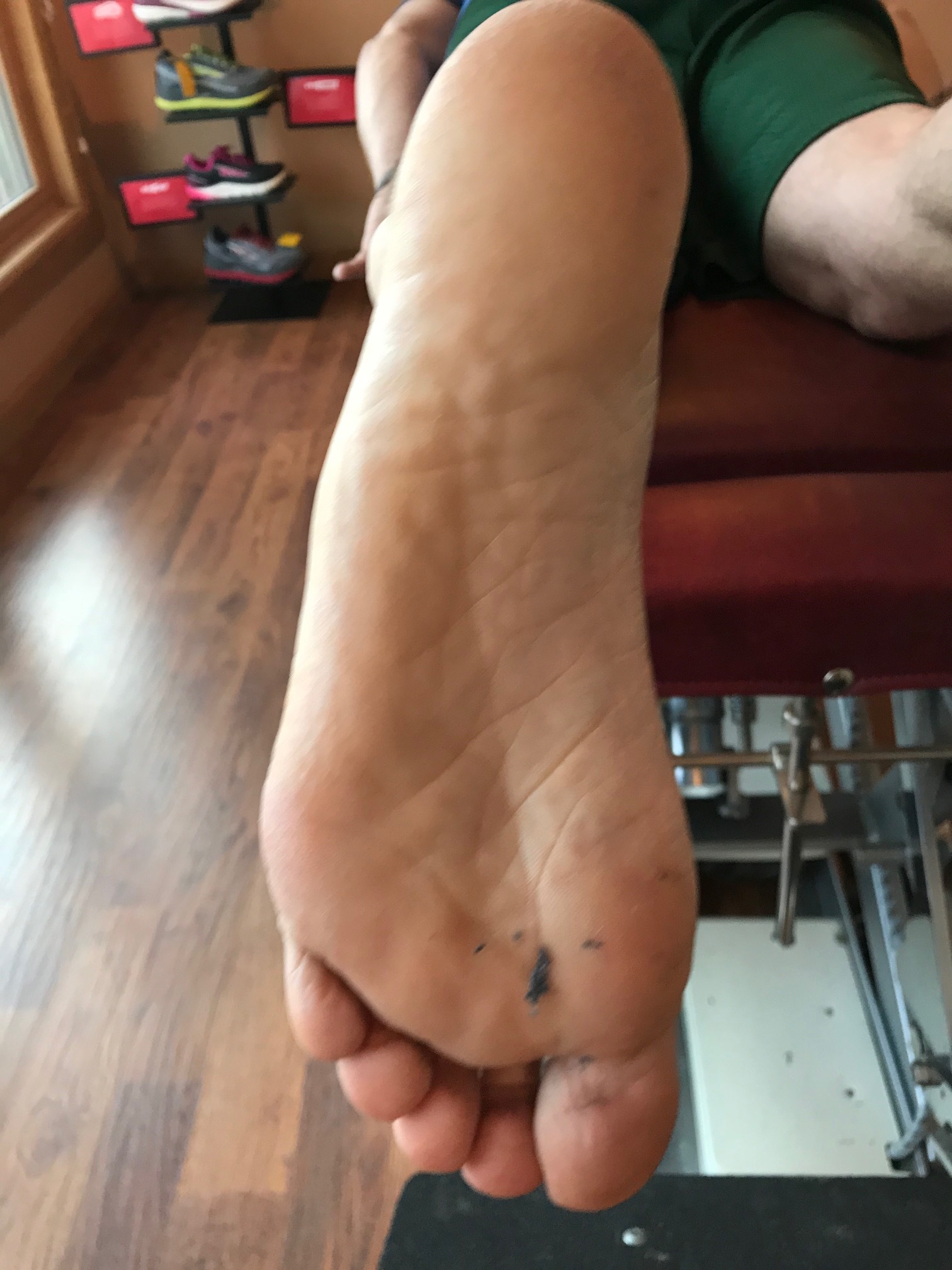The “ banana foot”
/So, you see at foot that looks like this and what do you think? What are some of the biomechanical characteristics of people with the foot that when, you bisect the calcaneus, the line passing forward passes lateral to the second metatarsal or a line between the second and third?
This condition can be congenital, in conditions like forefoot adductus or compensatory.
The first thing that springs to mind when we see deformities like this is “things usually occur in threes“. So we would expect to see other anatomical and/or genetic abnormalities. An adducted forefoot, like you see here, often occurs as the result of lack of internal rotation of the hip on that side so therefore will often be present with conditions like internal tibial torsion and femoral retrotorsion, which we often, but not always, see together. Because of the increased gait and foot progression angle in these individuals, the forefoot compensates and adducts to bring the center of gravity more to midline.
Feet like this are often, but not always, cavus and rigid. If it remains in relative supination (plantarflexion, abduction and inversion) it is an excellent level but poor shock absorber.
Forefoot adduction can also be a compensation pattern if an individual is unable to get the head of their first ray completely down to the ground. It could be a true forefoot varus or more commonly, a forefoot supinatus; either results in an inability to get the first ray down. This often causes the foot to adduct in compensation, and, due to the tarsal articulations, often raises the base of the first metatarsal increasing the inclination angle of the first ray. This frequently leads to limited dorsiflexion of the first metatarsophalangeal articulation.
So what is a clinician to do?
Ensure that the mechanics of the foot are clean through manipulation and mobilization
Make sure there are appropriate flexors/extensor ratios of skill, endurance, and strength of the foot musculature both intrinsically and extrinsically. This means making sure that the long flexors and extensors are in some degree of balance.
Work on balance and coordination of the lower extremity. This can be impeded if they’re unable to get ahead of the first right down to the ground. Exercises for the peroneus longus, extensor hallucis brevis and short flexors of the foot will often help with this.
“Banana foot”. Coming to your clinic, or a clinic near you. Maybe today…
Dr. Ivo Waerlop, one of The Gait Guys.
#forefootadductus #bananafoot #supination #thegaitguys





























